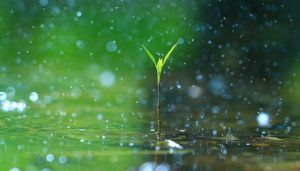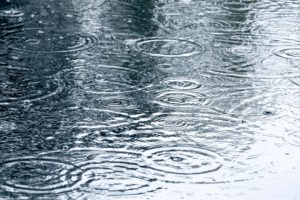As a nation, we are very accustomed to a rainy day. From those drizzly April showers to the severe downpours that follow rumblings of thunder, we experience it all — but we aren’t always as prepared for it! The UK Met Office found that between 1981-2010 Britain had an average of 1,154mm on rainfall per year, and during this period we endured an average 156.2 rainy days. Being caught off guard when the heavens open can seem like an annoyance, but rain is actually a very important aspect of wider life, and furthermore, the health of our planet and its ecosystems. Join us as we take a look at some of the unsuspecting value found in the humble ‘rainy day’.

Agriculture and the environment
Rain is a lifeline for supporting crop growth across the world, and this proves vital in the need to meet soaring food production demands. Rain is a valuable way to manage crops, and it is a natural alternative to the strenuous man-made irrigation process employed by farmers in regions where less rain falls. Each crop has its own water requirements, and farmers can use climatology methods to calculate which crop will fare best in accordance with long-term rainfall trends based on the region they’re in. Therefore, rain really is vital in order to maintain the world’s food supply, and agriculturalists are already experimenting with cropping habits, and the effects of climate change on rainfall are already impacting annual figures.

Rain creates landscapes
Some of the most famous areas in the UK have been created by rain at some stage, through the gradual process of erosion. Rain is heavily involved in topography — the study of physical land features, as it carves and softens areas of land, creating unique rock formations on some of the UK’s most iconic areas. From the White Cliffs of Dover to the Birling Gap in East Sussex, erosion caused by natural elements such as rain continues to make its mark on the land, and the level of impact that it can have on our surroundings is remarkable.

Atmospheric clean up
Rain itself is associated with the phenomena of atmospheric cleaning, targeting pollution build ups found in our towns and cities. A telltale sign of this is the brown haze which is often evident in the skies of these pollution-dense areas, and it appears due to a layer of pollution containing a harmful mixture of aerosols, dust, and soot gathered in the atmosphere. This has been proven to have potentially damaging effects on human health, as well as food security. These metropolitan examples of pollution benefit greatly from a good downpour — just make sure you’ve got your trusty Storm umbrella to hand! Rainfall can periodically clear the air of this dirt and debris, and when this happens after a prolonged dry spell, it brings a distinctive fragrance known as petrichor. Australian scientists first named the term in the 1960s, and it describes the earthy, warm scent that enters the atmosphere produced by bacteria released upon rain hitting dry ground.
Therapeutic qualities
Some of us rejoice when it rains — and no, we’re not even talking exclusively about farmers here! Many people take comfort from the sound and appearance of rain, and if you happen to be warm and sheltered when the downpour begins, then rain can feel therapeutic. Many of us enjoy the comfort that comes with even just hearing the sound of rain, and there’s certainly something more appealing about listening to rain whilst warm indoors than being stuck in a deluge without a brolly! In fact, taking a walk in the rain or even going for a run can feel extremely relaxing. Fulton’s range of umbrellas are all designed to help you tackle the elements, with fiberglass ribs for lightweight strength and durable polycarbonate joints.
Now that we’ve learnt the value of a downpour, it’s time to seize the day — whatever the weather!
